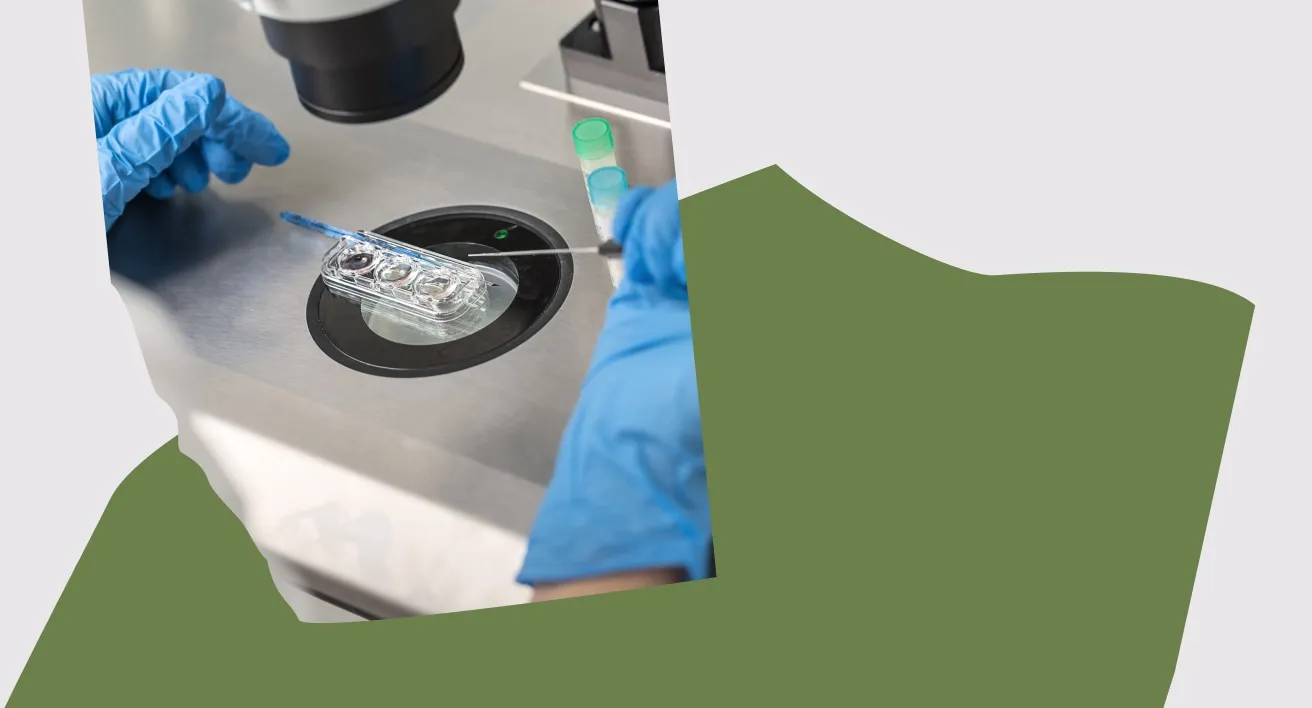Reciprocal IVF

Registered nurse and expert in reproductive medicine


What is reciprocal IVF?
It’s when the eggs from one partner are used to create an embryo that the other partner will carry.
Reciprocal IVF can also be referred to as shared motherhood, intra-partner egg donation, co-maternity, or even shared parenthood. It’s a way for both partners in a same sex couple to be able to participate in conception and childbearing in a big way. At a high level, the donor partner goes through the egg retrieval process. Her egg is fertilized with donor sperm in a lab and implanted into the carrying partner, who will carry the pregnancy to term.
How does reciprocal IVF work?
It’s important to visit a clinic for a consultation as a couple. A fertility doctor will review test and scan results to recommend the partner best suited for each role. If one partner has better ovarian reserve, the doctor may recommend that she donate the egg (“donor partner”) and the other partner carry the pregnancy (“carrying partner”).2
The couple will decide on a sperm donor, either from a sperm bank or someone they know, and order sperm. A fertility doctor and clinic staff will create a plan for each partner: first, the donor partner will begin medication to stimulate her ovaries and grow eggs. The carrying partner will begin medication later to prepare her uterus to accept a pregnancy.
The donor partner will go through stimulation to grow, mature, and retrieve healthy eggs, which involves hormonal injections and regular clinic monitoring. When the time is right, a doctor will retrieve the mature eggs, and an embryologist will fertilize the eggs with sperm to create embryos. Any extra fertilized eggs can be frozen and stored for later use.
Toward the end of the donor partner’s egg retrieval process, the carrying partner will begin medication that will prepare her uterus for pregnancy. After the donor partner’s embryo has grown in a lab for a few days, a doctor will implant it into the carrying partner’s uterus. A few weeks later, the carrying partner can take a pregnancy test, and if all goes well, she will carry the pregnancy to term.3
What are my reciprocal IVF legal rights?
It depends on your state, your marital status, and who carries the pregnancy. You’ll want to consult a lawyer — adoption attorneys are experts at handling situations like these. The Academy of Adoption and Assisted Reproduction Attorneys’ directory is a good place to start.
If you’re planning to use donated eggs or sperm, speak to an attorney and your clinic before you go through treatment. Because state laws vary, it’s important to understand what you need to do to become legal parents of your child.
If you and your partner aren’t married or in a civil partnership, only the carrying partner will be a legal parent at birth. That’s why it’s critical to fill out paperwork to name your partner as a legal parent. If it doesn’t happen before birth, you may need to go to court to legally become the child’s parent.4
Depending on the state you live in and the sperm bank you select, your child might be able to request information about their sperm donor after turning 18. The sperm bank you select will be able to answer any questions you have about their policies. No matter whether or not their identity is kept anonymous, your sperm donor has no rights or legal obligations to the child.5
How much does reciprocal IVF cost?
As you might imagine, reciprocal IVF costs more than standard IVF, because both partners need medical care.

Base cost of treatment:
$13,000

Additional procedures:
$3,000

Medication:
$2,000–$5,000

Total average cost:
$19,500
The cost depends on your clinic and the medication your doctor prescribes. “Natural” cycles without medication are more affordable than “mild” or “stimulated” IVF. Learn more about IVF treatment options.
Clinics’ listed prices can leave out essential procedures and medications, such as embryo freezing and storage for additional embryos created, sedation during egg collection, and medication. All these extra costs can add thousands of dollars on top of your treatment costs.

The bottom line
Reciprocal IVF allows both partners to participate actively in the conception and birth of a child. The average cost of reciprocal IVF in the US is $19,500, including medication and all essential procedures. If you need help financing your reciprocal IVF treatment, consider applying for a Gaia Plan, which will cover all your treatment costs and allow you to start treatment for as little as a protection fee.
Common questions asked about IVF
Your fertility doctor will be able to answer your specific questions about your unique treatment plan, but there are a handful of questions that nearly every patient asks:

Reciprocal IVF is generally very safe, and the risks are similar to complications from Standard IVF. Medical risks can include having twins or triplets or an ectopic pregnancy, where a foetus develops in the fallopian tube rather than the uterus and cannot be carried to term. There’s also a rare, but possible, risk of premature delivery8 and ovarian hyper-stimulation syndrome, which can cause dangerous blood clots.9

Everyone has different pain tolerances, and some experiences are less pleasant than others. Some parts of the process that might cause discomfort include giving yourself shots, recovering after an egg retrieval process, and mild cramping from an embryo transfer. The process can also be emotionally taxing. The Gaia community can be a great resource for people going through IVF treatment. Learn more about the community.

It generally takes 4-6 weeks, like standard IVF treatment, but it depends on both partners’ menstrual cycles. If you’re a same sex couple, your doctor will likely prescribe medication to sync your cycles to suit the timing of your planned embryo transfer.
Am I a good candidate for reciprocal IVF?
If you’re a same sex couple, reciprocal IVF can be a good choice for you. A doctor can best advise which of you would be best suited as a carrying partner and a donor partner.
Depending on factors including your age, health, and fertility history, you might be eligible for a Gaia Plan to finance your reciprocal IVF treatment.
Is reciprocal IVF suitable for me?
Reciprocal IVF is suitable for same sex female couples or trans men who want to become parents. Learn more about your options:

IVF with donor sperm








